|
|
As Milwaukee grew, several horsecar lines sprang up to transport the people about town. Some were later converted to electricity.
The first to become electric was the Wells Street Line. It's first electric operation was on April 3, 1890. Several others followed.
Later, TMER&L was formed to acquire these lines and the two steam dummy lines and incorporated them into one system. Soon
more lines were added until lines on most major streets covered much of the city.
|
|
|
|
This map shows the streetcar lines as the existed in 1933. After that
no new lines were built, and existing lines began to be cut-back,
abandoned or converted to trackless trolleys and buses.
|
|
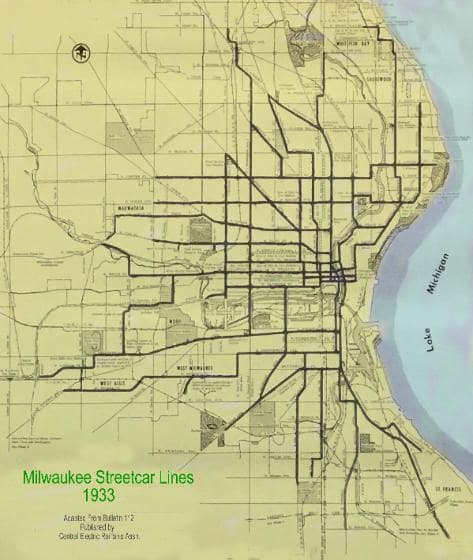 |
|
|
|
|
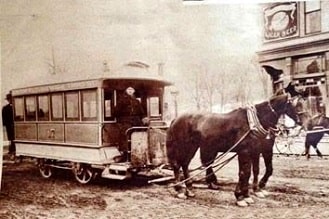 |
|
|
|
|
Early Milwaukee
Horsecar.
|
|
|
|
|
|
|
|
|
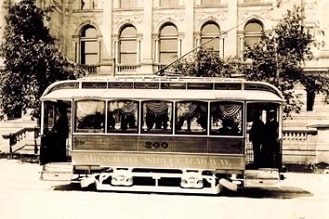 |
|
|
|
Early Milwaukee
Street Railway car
used for funerals.
Body became a
shed on north side.
Now being restored
|
|
|
|
|
|
|
|
|
|
|
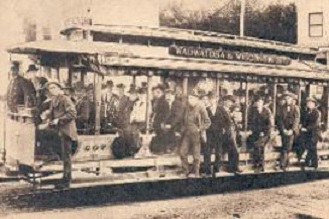 |
|
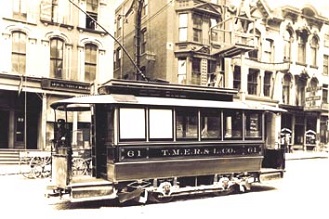 |
|
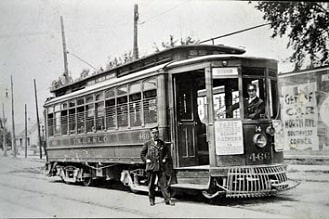 |
|
|
|
In the beginning, TMER&L acquired an assortment of cars from the various lines, but
soon bought standard series of their own. All these cars required a two-man crew....
Conductor and Motorman. To cut costs, in 1919 they designed and built their own
one-man car (#800) requiring only a Motorman and incorporating other features they
wanted. They then sent it to St. Louis Car Company to mass produce the 800-series.
St. Louis later produced the 900-series with a few modifications. Right: A busy 3rd
Street. A 500-series in front, followed by an 800-series, with a 600-series to the right.
Notice the safety island for passengers which allowed traffic to pass on the right. These
were only used at major stops. Most stops the passengers had to leave or board right in the
street.
|
|
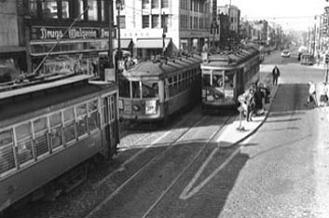 |
|
|
|
|
|
Although the lines once covered most major streets, after 1954 there were only two lines left, Rt. 11 Vliet-Howell and Rt.10 Wells.
Rt.11 ended in 1956, leaving Rt.10 as the sole survivor, and the one most people can still recall.
|
|
|
|
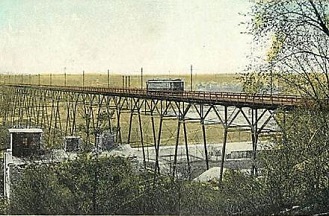 |
|
Crossing the Rt.10 Wells Street viaduct
was a memorable experience. Built in 1892
by the Milwaukee & Wauwatosa Motor
Railway (a steam dummy line) it originally
had one track for the trains and a plank toll
roadway for horse drawn wagons and
pedestrians. Contrary to some faulty
memories, it was made of steel, not wood,
and never shook, swayed or rattled. It was
strong enough to carry these original steam
dummy trains, four car interuban trains
(each car weighing over 50 tons) and the
streetcars.
|
|
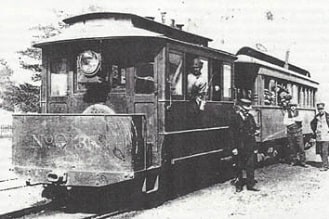 |
|
|
|
|
|
|
|
|
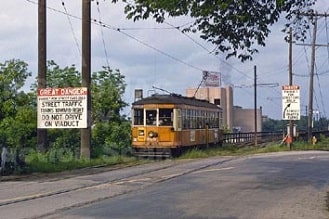 |
|
|
|
|
A 900-series leaves the west end of the viaduct. Note the warning signs for traffic. There
never was an accident or mishap on the viaduct involving the interurbans or streetcars, but
occasioanlly a drunk motorist would ignore the signs and get his car stuck on the ties.
|
|
|
|
|
|
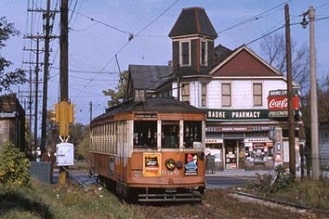 |
|
|
|
|
|
|
After crossing the viaduct, between 52nd and 53rd streets the West Allis branch headed
south on private right-of-way. Here a 900 crosses Bluemound Rd. That right-of-way is
now the road to the Zablocki VA Center.
|
|
|
|
|
|
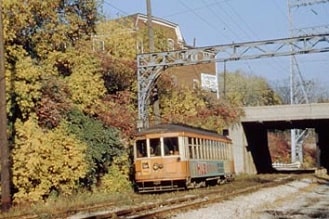 |
|
|
|
|
At what is know as Cemetery Curve, the right-of-way then joined the Rapid Transit line
up to 68th Street. A 900-series car rolls west just past the Hawley Road bridge. The area
to the right was occupied by the Rapid Transit tracks. This cut, the bridge and the tavern
above still exist. The viaduct across the valley, and the extensive use of private
right-of-way is one reason the Rt.10 line lasted the longest.
|
|
|
|
|
|
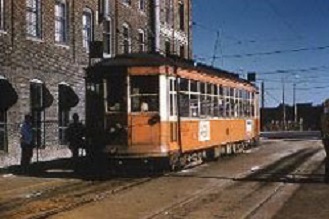 |
|
|
|
|
|
|
The line then curved over to 70th, and ran along the side Greenfield Ave. In the beginning,
it ran up Greenfield to State Fair Park, then south on 81st, and west on Lapham to meet
the interurban line at West Junction. Later it was cut back to 70th & Greenfield next to the
Allis Chalmers Plant. Left: Looking towards Greenfield.
|
|
|
|
|
|
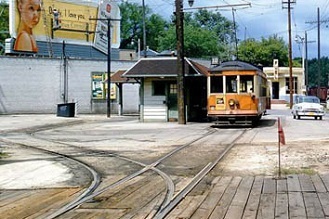 |
|
|
|
|
The Wauwatosa branch continued to follow the line built by the Milwaukee & Wauwatosa
Motor Railway, up Wells to 68th Street. Here it turned north, crossed the river , then
turned NW on Motor Ave. (named after the original builders). It then continued NW along
the Milwaukee Road tracks to Harwood Ave. At Harwood it turned southwest and
continued on Watertown Plank Road to the County Grounds. It was later cut back to
Harwood Ave.
Right: Terminal looking towards Harwood from the bridge over the river.
|
|
|
|
|
|
|
Many streetcar lines were converted to Trackless Trolleys. This mostly happened on lines where the city wanted to rebuild the streets and
have the tracks removed. There were several advantages to Trackless Trolleys. The company saved the expense of maintaining the tracks
and the portion of the street where the tracks were. They could load at the curb thereby relieving traffic congestion. They were not
considered motor vehicles and weren't licensed by the State. Drivers didn't need a drivers license. They weren't subject to many of the
motor vehicle laws, including speed limits. Drivers often sped across the viaducts and on Forest Home Ave. They were electric, with no
exhaust fumes. The public found them more comfortable than the streetcars. They soon developed a fan following of their own.
|
|
|
|
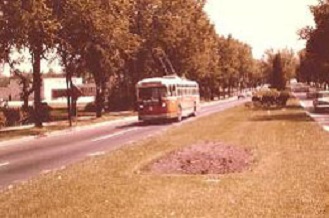 |
|
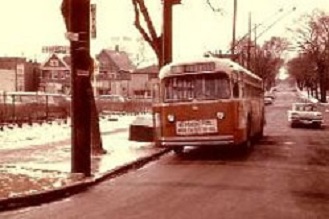 |
|
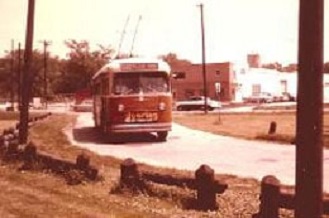 |
|
|
|
|
Heading southwest on Forest Home.
|
|
Eastbound on Thomas at Farwell.
|
|
Wilson Park turn around loop.
|
|
|
|
As early as the 1920's TMER&L also operated several bus lines where the expense didn't justify extending or adding a streetcar route.
As with the streetcars, in the beginning they operated a variety of buses. They had two premium fare routes in the city know as Green
Buses. They also operated Wisconsin Motor Coach Lines on routes to other cities not served by their interurbans.
|
|
|
|
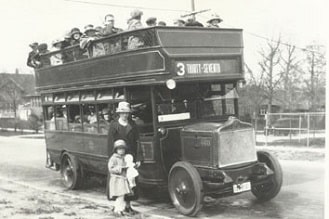 |
|
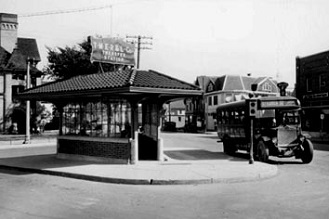 |
|
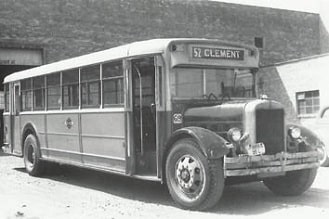 |
|
|
|
Early double-deck bus.
|
|
Early bus on Lisbon at North Ave transfer station
|
|
Early larger bus at garage.
|
|
|
|
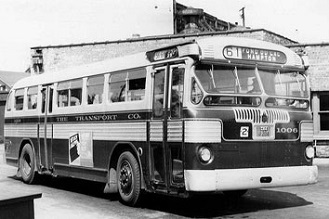 |
|
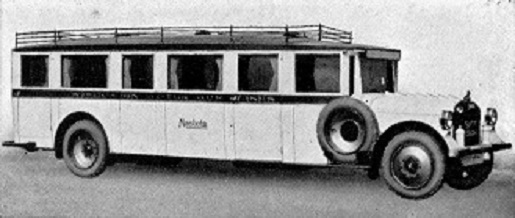 |
|
|
Left: An early
Twin Coach gas
bus.
Right; Wisconsin
Motor Coach
Lines bus.
|
|
|
|
|
|
|
|
TMER&L had their own printing shop. They printed almost everything
they needed. Schedules, guides, utility bills, various forms, transfers,
passes, etc. Here are some examples.
|
|
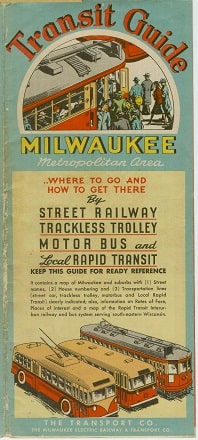 |
|
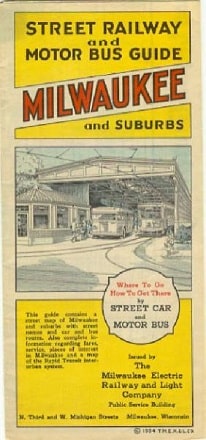 |
|
|
|
|
|
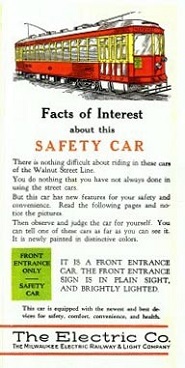 |
|
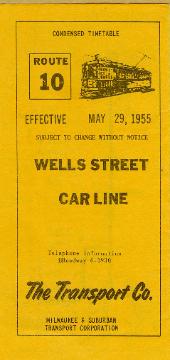 |
|
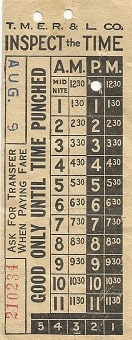 |
|
|
|
|
|
|
|
|
|
|
|
|
Like many companies, to
stimulate riding during the
Depression, in 1930 they
introduced the $1.00 weekly
pass.
|
|
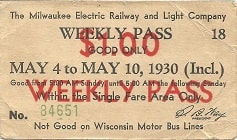 |
|
TMER&L printed their own passes, and also printed passes for
other systems. Here are some examples from Capital Transit in
Washington D.C. Some used the same design on the same dates.
Others used differant dates and many others used differant designs
specific to Washington D.C.
|
|
|
|
|
|
|
|
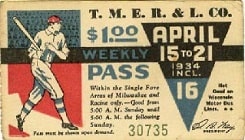 |
|
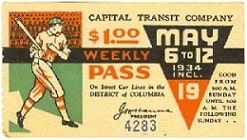 |
|
|
There were variations with zone fare coupons attached.
The pass below is one of hundreds returned for refunds after the
1947 blizzard. Note "paid" punched with small holes.
|
|
|
|
|
|
|
|
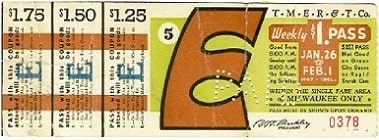 |
|
|
|
|
|
|
|
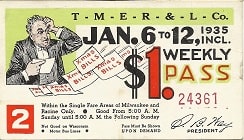 |
|
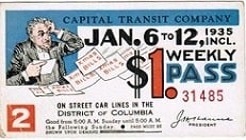 |
|
|
|
|
|
School children had their own
limited use passes.
|
|
Milwaukee passes were often
very artistic and remain some
of the most collectable on
Ebay and other forums.
|
|
|
|
|
|
|
|
|
|
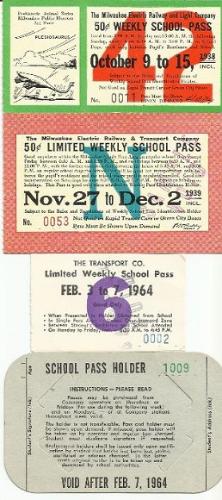 |
|
|
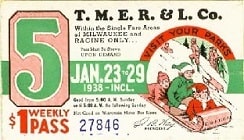 |
|
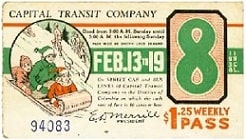 |
|
|
|
|
|
|
|
Car tickets were another way
to pay the fare. TMER&L
collected thousands of these
each day. To count them,
they used forced air to
separate them from the coins.
They were then placed in
bundles and weighed. This
was found to be more
accutate than counting by
hand.
|
|
|
|
|
|
|
|
|
|
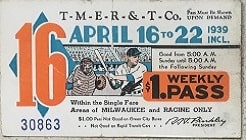 |
|
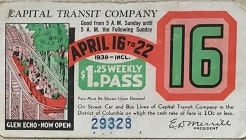 |
|
|
|
|
|
|
|
|
 |
|
|
|
|
|
 |
|
|
|
|
 |
|
|
Passes and transfers continued to be printed in
house by subsidiaries and succesors..... The
Milwaukee Electric Railway & Transport Co.,
Milwaukee& Suburban Transport Co. and
finally Milwaukee County Transit System,
until February 2016.
The last ones were a series of four
commemorating previous passes and featuring
gold leaf highlghts.
Last passes and lasr transfer.
|
|
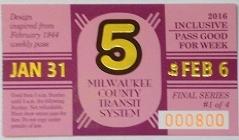 |
|
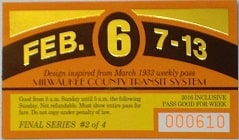 |
|
|
|
|
|
|
|
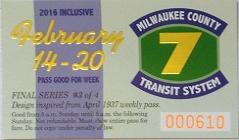 |
|
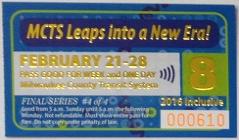 |
|
|
|
|
|
|
|
|
|
 |
|
|
|
|
|